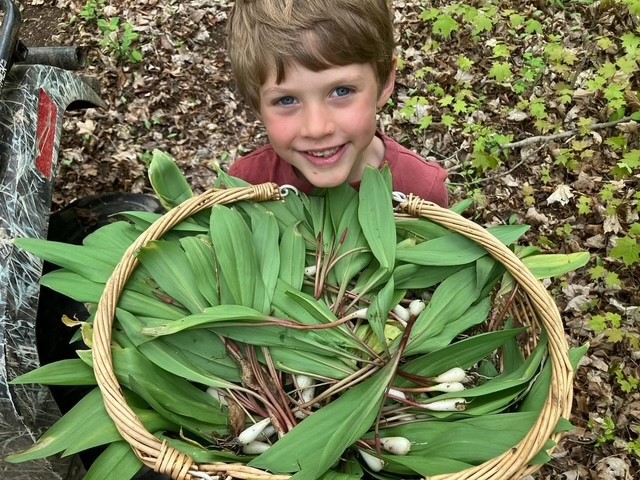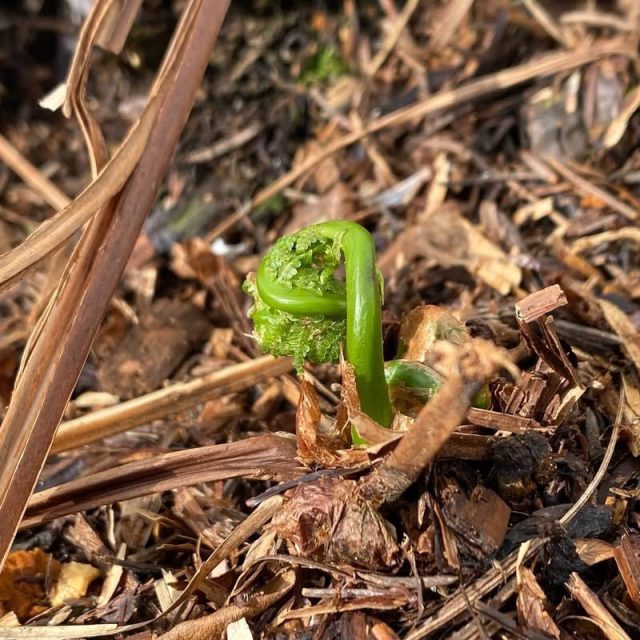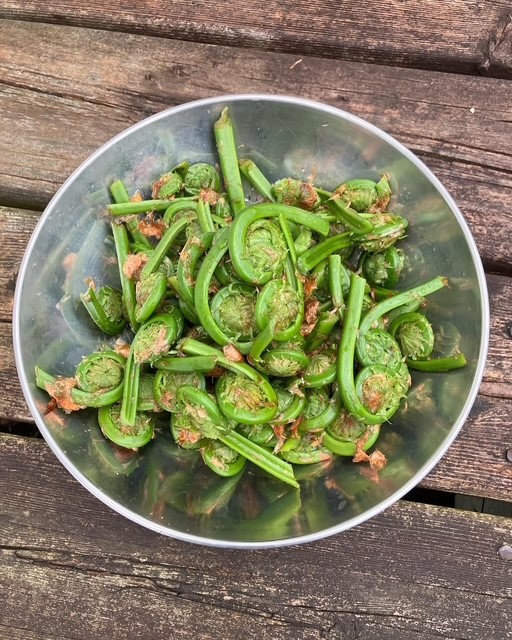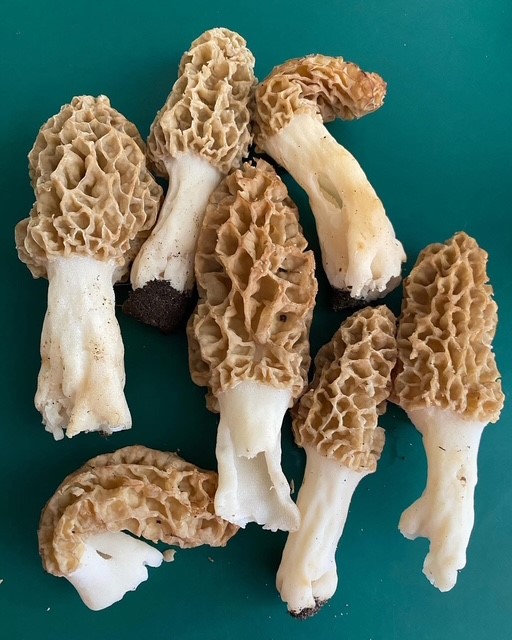Spring Foraging: Nature’s Awakening on Our Homestead

I get so excited this time of year, watching all the plants awaken from their winter slumber. Like the plants, I feel the aliveness in the spring air and remember the vibrancy that existed before the slow, quiet of winter set in.
Educating ourselves on what is safe to forage
These past few years have been such a treat on our land. As relatively new owners, we didn’t quite know what would pop up—so each season has felt like a surprise gift. Every year, I notice new plants I hadn’t seen before, and I’m getting better at identifying species I never paid much attention to until we lived here.
One of my favorite pastimes with the kids is foraging for easily identifiable wild edibles. I absolutely love teaching them how to recognize these plants and connect more deeply with nature. So far, we’ve found morel and puffball mushrooms, wild leeks, red and black raspberries, and fiddlehead ferns. My daughter will pull a wild leek straight from the ground and pop it into her mouth—soil and all!
This year, I’ve also become more intentional about the wild herbs growing around us, using them to make our own teas, tinctures, and body products. Over Easter weekend, the kids and I spotted some stinging nettle popping up. We dried it in the oven and made a delicious batch of what the kids call “honey tea”—any tea with honey and milk added earns that title in our home.
Depending on where you live, you may be able to find some of these “safe” wild edibles too. I’ve created a simple cheat sheet with photos of our favorite springtime finds to help you get started. You don’t need to have acres of land to find these gems but ensure that the plants have not been exposed to any spraying.
*This post may contain affiliate links. Please read my privacy & disclosure policy here.
🌱 Fiddlehead Ferns (aka Ostrich Fern)


What to look for:
Bright green, tightly coiled ferns popping out in clusters of about 6. Look for mounds where several ferns are growing together
How to harvest:
Snip about 1 inch of the stem and coil. Always leave at least half behind to allow for healthy regrowth.
How to Enjoy:
Pan-fried in butter and garlic is my favorite! You can also toss them into salads, omelettes, or simply enjoy them as a side dish.
🧄 Wild Leeks (aka Wild Garlic or Ramps)
What to Look For:
Long, pointed, oval leaves growing from the base of the plant. They’re hairless, vibrant green, and smell strongly of garlic and onion when crushed.
How to Harvest:
Only take about 5% of a patch (and only from private land with permission). These take time to regenerate, so harvest responsibly.
How to Enjoy:
The leaves make a gorgeous pesto. I dehydrate the bulbs to use in soups and stews year-round, and my brother and dad love pickling them!
🍄 Morel Mushrooms

What to Look For:
These are rare gems! Look for a honeycomb-like cap attached directly to the stem. Always check for a hollow core—false morels are toxic and dangerous.
How to Harvest:
Pinch and twist the stem or cut close to the ground with a small knife. Be sure to leave the root system intact (I unfortunately did not do this my first time as shown in photo).
How to Enjoy:
We love them battered and fried, but you can use morels just like any other mushroom in your favorite dishes.
🌿 Stinging Nettle

What to Look For:
Young plants with jagged-edged, opposite leaves. They’re spear-shaped and covered in tiny, stinging hairs.
How to Harvest:
Use gloves and scissors! Cut at the base or just above the top three nodes. I didn’t get stung, but my daughter did—so be cautious.
How to Enjoy:
Dry for tea or blend into anti-inflammatory creams. Nettles are also great added to soups and stews.
⚠️ A Quick Note:
While I’ve picked wild foods that are fairly easy to ID, always double-check with trusted foraging resources or experts before consuming anything. Safety first!
💬 What’s your favorite wild food to find in spring? I’d love to hear about it in the comments!



